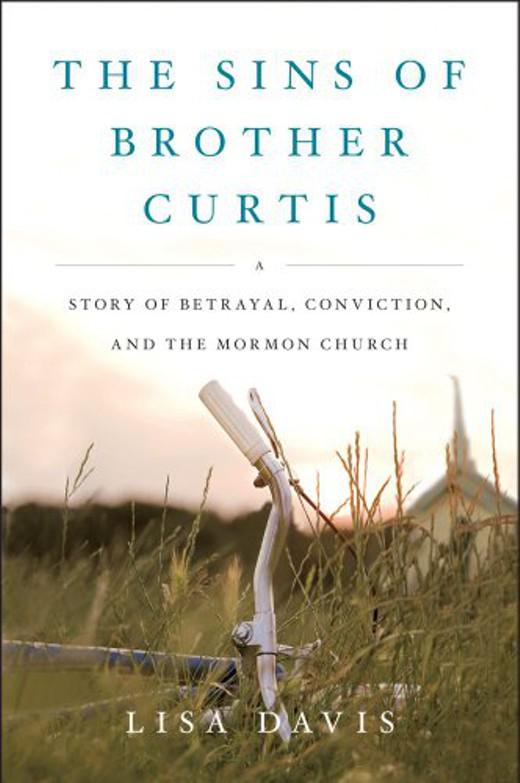|
Child molester + Mormons = easy prey
By Kel Munger
News Review
July 19, 2015
https://www.newsreview.com/sacramento/bibliolatry/blogs/post?oid=1939245
 |
 |
The Sins of Brother Curtis: A Story of Betrayal, Conviction, and the Mormon Church hits the bookstores today—and author Lisa Davis will be discussing the book and signing copies at the Borders on Fair Oaks tomorrow evening. In The Sins of Brother Curtis, Davis details the career of one of the most prolific serial child molesters in the U.S., Frank Curtis. As a member of the Church of Jesus Christ of Latter-Day Saints, he was “called” to serve as a Sunday School teacher and Boy Scout leader, which gave him ample access to children.
He molested boys in several Portland, Oregon wards from 1976 to 1991. It was the last victim who filed a lawsuit against the LDS Church—because a bishop had told his mother than they “knew” Curtis was a pedophile and hadn’t warned the family—that it was discovered that the church had, in fact, known for years that Curtis was a danger to children. He’d even been excommunicated, then re-baptized and returned to the positions from which he preyed upon children.
Davis is a Sacramento native and a graduate of John F. Kennedy High School who started her journalism career at Sacramento City College. Her first writing job was at the Sacramento Business Journal. She’s also done investigative reporting for several alt-weeklies, including the Phoenix New Times and SF Weekly, and currently teaches journalism at Santa Clara University.
She spoke with SN&R by phone this morning:
SN&R: It really struck me, where you noted that Mormons had pretty much taken over the Boy Scouts…
Lisa Davis: Boy Scouts of America is a separate entity, technically, from the LDS Church; but the church is the largest single sponsor of the BSA. I think the Methodist Church is the second, but the LDS Church is far and away the largest sponsor. The Mormon Church has embraced BSA as the church youth group, which means, if you’re a Mormon boy, you’re going to be in Boy Scouts. Because of that, almost every ward has a Boy Scout troop, and that’s why there’s so much crossover in these molestation cases.
Now, a few years ago, the LDS Church made it a policy that every one of the church Boy Scout troops had to have their leaders vetted through the BSA. I’m not sure what BSA vetting includes, but BSA has its own set of problems. I don’t know if there’s a background check, but even if there was, Frank Curtis would have passed it. His criminal records were decades old and he’d never been arrested for child molestation.
I also found it interesting that the disciplinary records for Curtis listed “homosexuality” instead of “pedophilia” as the reason for his ex-communication…
There’s no real explanation for that. The case didn’t go to trial, so it didn’t get brought up. I was only able to discover that because of some documents that were entered into the record before the records were sealed. Let me make a shout out to the Portland Oregonian, which wrote about the case at the time and got the information out there to be found.
It was a tremendously interesting detail to me that those records revealed that he’d been ex-communicated by the LDS because of “homosexuality” rather than child molesting.
It also struck me as absolutely outrageous that at least one of the boys, a victim, was punished by the church…
So many parts of this story—everything about this story—was outrageous: The amount of time that it was allowed to continue, the number of victims, the ferocious fight to keep it secret, the constitutional issues about religious belief versus conduct.
Can you speak a little to those constitutional issues?
Those came up in a couple of different ways. One of them revolves around the [LDS] belief in redemption. In the court case it, became known as the “clean slate” argument. What happened was that Frank Curtis had been found out and ex-communicated by the church structure at one point. He went through a period of repentance and then was re-baptized. After that, he once again had access to children through Sunday school and church activities.
In court, the lawyers [for the LDS] argued that church leaders had a constitutional right to exercise their faith through the “clean slate” doctrine and that the court couldn’t examine their beliefs. Essentially, that meant that the claim [by the victims] that [the church] had a responsibility to warn parents was a violation of their right to practice their religion
Was it complicated by the LDS’ reliance on lay clergy?
Almost every state has a clergy-penitent law. It’s designed for confession, because we as a society believe that people have a right to unburden our sins to a religious leader without fear, and that’s what it’s for. But this comes into play when the LDS Church argued that pretty much any conversation with anyone in the church had clergy-penitent privilege.
So if Joe and Bob are talking about the weekend, and Joe is an LDS bishop, it’s clergy-penitent privilege?
That’s what they claimed. It was part of the war of attrition that the church was waging against [the victim] Jeremiah Scott’s lawyers, because everything they tried to do, everything they tried to find out, first had to be fought on the ground of clergy-penitent privilege. And the LDS Church was losing in the appeal and supreme courts of several states, but they had the deep pockets and the lawyers to wear the victim’s lawyers down. [The LDS Church’s lawyers] were fighting a war of attrition, in which one side wins just because the other side can’t keep up.
It drains all the fairness out of the system. One of the victim’s lawyers said, “It’s one thing to lose because you have bad facts, and it’s another thing to lose because you just can’t play.”
There were some dark days.
Do you think we’ll see more of these cases?
Institutional child sex abuse is not exclusive to the Mormon Church. As there is growing awareness in the population in general—and in the Mormon population—there’s a growing awareness that, regardless of your religion, sex abusers have to be kept away from children.
Do you think pressure from within the LDS Church will change the way they handle molestation cases?
They can certainly change procedure. I’m not sure they can change their doctrine.
But the law views religion uniquely. It breaks religion into belief and conduct. Belief is protected by the constitution. It’s deeply historical for us to fully protect belief. Conduct is another story. The basic example is that you can believe in human sacrifice but you can’t do it.
Still, it gets messy when you get into the practice. The act of calling a person like Frank Curtis into a position in the church has been called by some courts an extension of belief.
Where the conduct comes into play, and where this can be a simple matter of changing policy and procedure, is when you institute supervision and background checks, and then you can change things to keep children safe with structures and procedures.
This was also a particularly long period of serial molesting. The first victim found in this case was in 1976, and the plaintiff was believed to be the last victim in 1993. My personal belief, based on researching Frank Curtis’s life, is that there are many, many more victims. I don’t think we’ll ever find them.
One of the interesting things about Frank was that he told these gangster stories about being in the mob and having done all these “bad things.” He was a big man, wore a fedora, had a big voice, so he really was a kind of intimidating character. I wasn’t sure if this was just his schtick or what.
But I was able to trace him back to Chicago, where he was born in 1903, and his criminal record started when he was 12 with petty theft, street crime and then he graduated to armed robbery. Given where he was and what he was doing at that time, it’s possible that he worked for Al Capone, but he would have been low-level. But he was in a criminal enterprise. It’s fascinating, really.
So there’s a record. My favorite treasure from this archaeological dig was a criminal record from Detroit in 1929—in there it describes his—not just his crimes, but it describes him. I think this was the equivalent of a competency evaluation in 1929.
It says that he’s simple, he’s unstable and primitive and child-like. It also said in there that he had inappropriate sexual behavior with boys. There’s this one sentence, but it’s a powerful clue. If, in 1929, they say that he’s having sex with young boys, and we think that Jeremiah Scott was his last victim in 1991, that’s more than 60 years.
How long did you work on this book?
About eight years, but I didn’t work on it full time. I’d put it aside and do other things, but really it took eight years. I’m ready to end my relationship with the dead pedophile.
This is that story, you know, where everything about it was interesting. He was 70 years old before he molested any of these victims in this particular case. No one knows what a pedophile looks like, but nobody thought Frank Curtis looked like one.
One of my sources said that, if you’d lined up one hundred people, including Frank, and asked him to number them for who was likely to be a pedophile, Frank would be 98th.
It was also excessively creepy that he’d had penile implants, which allowed him to continue molesting.
It’s tremendously interesting – he had essentially been castrated – and after it … I had lengthy conversations with urologists. His testes had been removed before he ever molested any of the kids in this case. If that’s not proof that castration isn’t a prevention, I don’t know what is.
Lisa Davis will discuss and sign The Sins of Brother Curtis tomorrow (Wednesday, March 16) at 7 p.m. at Borders Books & Music, 2339 Fair Oaks Boulevard. It’s free—but don’t be a cheapskate. Buy a book.
|

